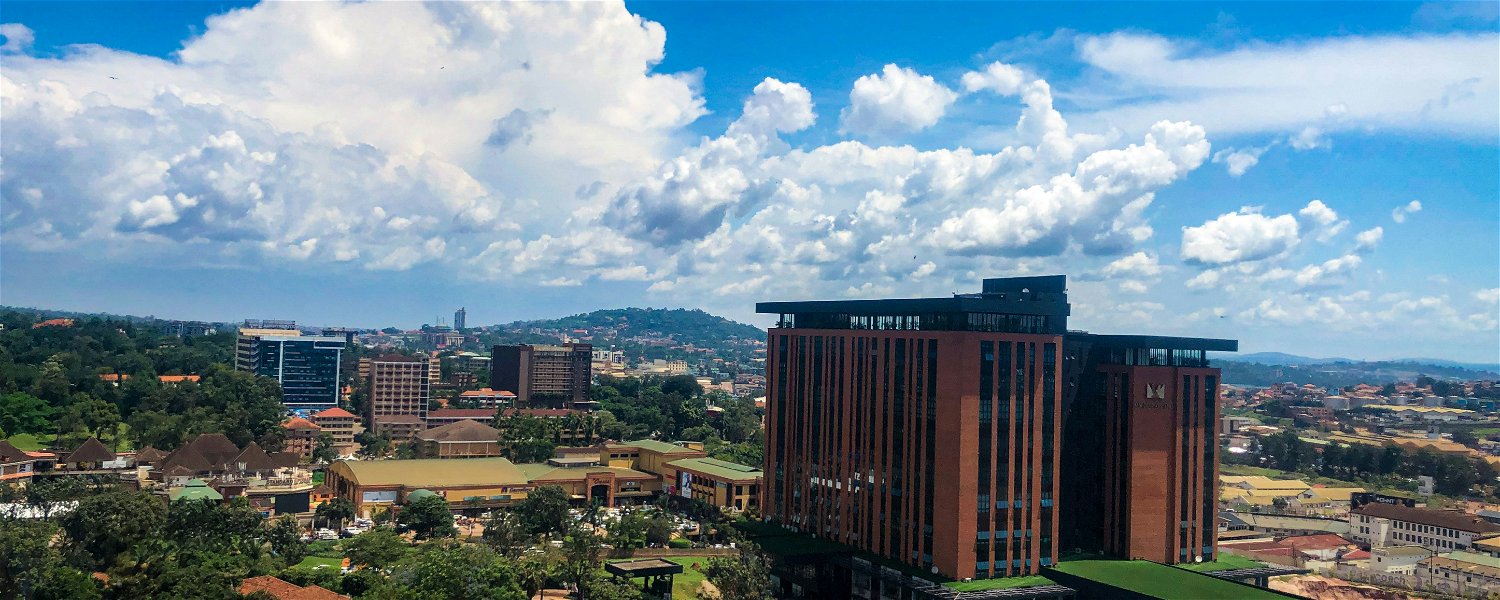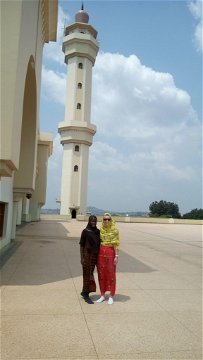Kampala City Highlights Tour
Our Kampala City Highlights Tour is a cultural heritage tour that brings you countless historical buildings and cultural heritage sites that we have put brief details about to help you choose which sites we take you to on this tour. We are happy to show you around 3 of the following sites on the half – day tour or up to 5 sites on the All-day tour. This tour is done using a car to get to the sites and thereafter take you around on a guided tour except for the part of down town Kampala, we recommend walking to get the real feel.
Gallery
Itinerary
1. Old Kampala Hill (Gaddafi Mosque)
The origin of KampalaThe origin of Kampala (Uganda’s capital city) can be traced to the year 1885 and this hill as its birth place. The city gets its name from the Impalas (in the antelope family) which where residents to this once called a ”kasozi ka impalas” literally meaning, a hill of impala cutting the long word short to Kampala. It is evident by the roads in this part of the city leading to this place, once known as Lugard’s fort (from early 1890s). Uganda’s first museum was established here in 1908. Currently the hill is a home to the Uganda National Mosque ‘’Gaddafi Mosque’’ the second largest mosque in central and sub-sahara Africa and the headquarters of the Uganda Muslim supreme council. The mosque also runs as a tourist site and it has a minaret (50.5metres) where one can get a good 360 degree view the city.
2. Kasubi Tombs
UNESCO world heritage siteOne of the UNESCO world heritage sites in Uganda and originally Kabaka (King) Muteesa I ‘ s palace (1880 – 1884). The graves of 4 kings of Buganda (Ssekabaka Muteesa I, Ssekabaka Mwanga II, Ssekabaka Daudi Chwa and Ssekabaka Muteesa II, father to the current king of Buganda) are found in the main house, Muzibu Azaala Mpanga. Bujjabukulu, the gate house is where Muteesa I lived awaiting completion of the main house. Ndoga Obukaba is the house containing the royal drums.
3. Wamala Tombs
Ssuna II was the 29th kabaka of Buganda kingdomSsuna II was the 29th kabaka of Buganda kingdom from 1832 until 1856 born to Nakkazi Kannyange and kabaka Kamaanya. He was only 12 years when he ascended on the throne and at the beginning of his monarch was loved by his people. He out did his grandfather and father as he is reported to have married 148 wives (at least) and had more than 200 children. He was the first king to admit outside traders into Buganda and at Wamala, a hilltop with beautiful surroundings is the sacred burial place of Ssuuna II. He was succeeded by Muteesa I – buried at Kasubi Tombs.
4. Mengo Palace
(1922 – 1933) and Idi Amin’s DungeonOfficial residence of the Kabaka of Buganda
This is the official residence of the Kabaka of Buganda, where the Namulondo (Buganda’s royal seat) is kept. The house which sits on the 260 acres was occupied by the army in 1966 when the kabaka was exiled, until repossession in 1993 and renovated in 1998. The constant fire at the entrance symbolizes the continuity of the kingdom only extinguished upon a kabaka’s death. Within the palace, is Amin’s Dungeon, constructed as an arsenal then used in the 1970s as torture chambers from which few would ever come out alive.
5. Bulange Building
Administrative seat of the Buganda KingdomThe administrative seat of the Buganda Kingdom, built between 1955 – 1958 inspired by the Stormont building in Belfast, Northern Ireland. The kingdom’s clan totems are displayed at the entrance and its where the Buganda Parliament sittings to plan for the kingdom take place. The king visits to open and close a final year and the members / representatives are only appointed by the king. Worth visiting to learn about the history and social organization of Buganda kingdom.
6. Uganda Museum
East Africa’s oldest museumStands as East Africa’s oldest museum started when the then British Governor directed all the district heads to collect ethnographic objects in 1901. The artefacts were housed at Fort Lugard (1908) thereafter moved to the Margret Trowell School of Art at Makerere University in 1941 and finally the current Uganda Museum building in 1954. With different sections; it makes it very easy for one to get a clear picture of Uganda before they go around.
7. Makerere University
First ever University in East AfricaEstablished in 1922 and the first ever University in East Africa. The Makerere University main building is the administrative building built 1939 – 1941, designed partly to resemble the Senate Building at the University of London, to which Makerere college was then affiliated. The university presently comprises of 9 colleges and one school. It is situated on one of the outstanding hills of Kampala city and showing you around here will give you a detailed perspective and history of higher institution learning in Uganda.
8. Down Town Kampala
Mingle with KampalansThis is basically where you get to mingle with Kampalans and get the real feel of this vibrant city. And here we shall show you around our prestigious Nakasero fruits and vegetables market, the organized chaos, viewing the taxi park and taking you through East Africa’s biggest second hand clothes and shoes market, Owino market.
9. Saint Paul’s cathedral
Headquarters of the Anglican church in UgandaThe headquarters of the Anglican church in Uganda and the fourth cathedral from 1890. The present cathedral was constructed between 1915 – 1919 by clay bricks and roof tiles. Bishop Hannington (Uganda martyr), Doctor Albert Cook and his wife, and lady Sarah Nalule, Kabaka Mutebi’s (current king of Buganda) mother are buried in the graveyard. The view of Kampala while at the cathedral is one of the best one can ever get, and the cathedral sits on one of the original seven hills of Kampala, Namirembe hill.
10. Saint Mary’s cathedral – Rubaga
Contains the remains of Archbishop KiwanukaConstructed by the White Fathers (1914 – 1925), the cathedral sits on the hill given to the catholic church following the 1888 religious wars and the headquarters of the catholic church in Uganda. The Romanesque cathedral contains the remains of Archbishop Kiwanuka, Uganda’s first native archbishop. Images of the 22 catholic Uganda martyrs are displayed in the stained-glass windows.
11. Namugongo Martyrs Shrine
32 young men were burned to death at NamugongoOn 3 June 1886, 32 young men were burned to death at Namugongo for their refusal to renounce Christianity. They were Anglican or Catholic. Annually on 3 June, Christians from Uganda and other parts of the world congregate at Namugongo to commemorate the lives and religious beliefs of the Uganda Martyrs. Crowds have been estimated in hundreds of thousands in some years. In June 2015, an estimated 2 million people attended the event.
Twenty two of the Catholic martyrs were canonized by Pope Paul VI on 18 October 1964 and are regarded as saints in the Catholic Church. A basilica has been built at the spot where the majority of them were burned to death. A church stands at the place where the Anglican martyrs met their death, about 2 miles (3.2 km) further east from the Basilica of the Uganda Martyrs. Documentation is available on 45 martyrs but it is believed that many more believers met their death at the command of Kabaka Mwanga II between 1885 and 1887.
12. Nakasero Hindu Temple (1954)
Hinduism arrived in Uganda in 1880sHinduism arrived in Uganda in 1880s and the Nakasero Hindu Temple (The Shree Sanatan Dharma Mandir) is one of the largest and revered in the country. Built by public subscriptions and follows the precepts of the Hindu temple architecture, building materials were imported from India and no steel bars were used. It is a master piece of Indian masonry with Hindu gods standing sentry on the outside walls of the temple, intricate stonework and richly decorated inside.
13. The Bahai House of Worship
Known as the mother Temple of AfricaKnown as the mother Temple of Africa, it is situated on Kikaya hill on the outskirts of Kampala. It is the only temple on the African continent and it is surrounded by green gardens designed to fit with Ugandan culture. With its nine-sided circular shape and striking dome, it was built in 1958 with overall height of 127 feet, at the time the highest building in East Africa and it still remains one of the largest religious structures in Africa. It is a must go place in Kampala for bird watching and relaxation with its cool breeze even on the hot days – are you ready to see the views of the city from the temple gardens, it’s a must visit.
14. Kibuli Mosque
Uganda’s first permanent mosqueLocated on one of the 7 original hills of Kampala, is Uganda’s first permanent mosque with its qibla hence the name Kibuli built in 1894. Outside the mosque stands a mango tree under which the first meeting to plan the construction of the current mosque took place with its foundation laid in 1941 and opened in 1951. The hill is one of the best ever viewing points of the other 6 original hills and developed hills of Kampala.





Share This Page